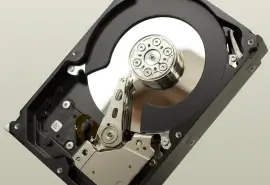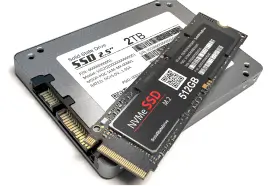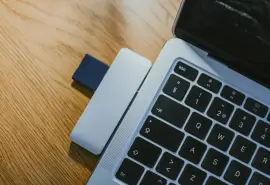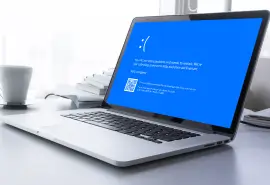Formatting storage devices is a common, effective practice, capable of cleaning folders and organizing files. However, accidental formatting happens more often than most assume, leading to data loss. Retrieving data from a formatted HDD, SSD, SD card, and USB flash drive is possible, depending on the situation. The experts at Secure Data Recovery, the authority in RAID, SSD, and hard drive recovery, explain how to recover formatted data.
Understanding Formatting
Users think formatting is an action performed on a functioning device, but the process begins during production.
Low-level formatting comprises procedures that prepare storage media for initial use. Before shipping drives or cards, manufacturers mark the start of each recording block, so controllers can manage read and write operations. This procedure forms the device’s foundation.
High-level formatting refers to partitioning and creating a file system, such as Microsoft’s NTFS on Windows or Apple’s APFS on macOS. When partitioning, users divide the drive into distinct regions, allowing the installation of different file formats on the same device. The file system provides more structure for storing and accessing data.
Together, formatting is an essential part of managing devices. Users can correct errors and customize their drive or card to fit their needs. But some format their device for another reason:
To clear space for new data.
Regardless of intent, formatting erases the contents of a storage device. And whether the deleted files survive depends on the formatting option chosen.
Quick Formatting
Quick formatting is the first option.
A quick format is the faster method. Quick formatting only erases the file system. Users can reformat their devices within several minutes by installing a new file system. With a quick format, the formatted hard drive, SSD, SD card, or USB flash drive labels the space the deleted data once occupied as free. Users can still have intact files recovered from unallocated space.
Quick formatting is intended for backed-up drives that will be reused.
Full Formatting
Full formatting is the other option.
A full format is the more comprehensive, time-consuming method. Unlike its quick counterpart, full formatting erases all existing data on a device by overwriting it with zeros. The formatting process also examines the surface for bad sectors. As a result, a full format often takes at least a couple of hours to complete, and the consequences are irreversible. It is impossible to get that data back.
Full formatting is well-suited for drives with sensitive data that will be replaced.
Data Recovery From Formatted Hard Drive
It does not matter if the formatting was a mistake or an intentional act of disk management.
Those who want to recover data from a formatted hard drive or external hard drive must have undergone a quick format. If that is the scenario, then the lost data could be recoverable. At this point, users have two choices: data recovery software or a data recovery service.
While some data recovery software is a viable option for those that suffered minor data loss, it is critical to recognize its limitations. Software will not recover data from a hard drive with shingled magnetic recording (SMR) that runs Windows 10 or 11, and that accounts for a growing number of cases. Since SMR drives write data in an unconventional manner, conventional, sequential software cannot retrieve its file. The SMR drive will translate the recovered data to zeros.
Data recovery software also cannot address significant corruption or file fragmentation and complicates future efforts if the initial attempt is unsuccessful. Saving new data to a hard disk drive or external hard drive increases the likelihood that important files are overwritten. For that reason, users should never save new files to the affected drive.
A data recovery service delivers much better outcomes in complex data loss cases. Professionals have state-of-the-art data recovery tools and techniques to retrieve lost files in challenging circumstances.
The recovery process starts with an assessment. Engineers draw on their experience, expertise, and equipment to diagnose the formatted drive and develop a tailored plan to recover the data.
In a normal situation, these recoveries involve imaging the formatted external hard drive or HDD inside a certified cleanroom to prevent further damage. Using specialized software, technicians create a bit-by-bit copy of the disk, enabling the service to work off the image in hopes of preserving the original files.
Afterward, specialists perform a deep scan of the image to reveal the remaining data. Once a service locates related file signatures, they use advanced file recovery techniques to salvage deleted data.
Experts can piece together the fragments to restore files from a formatted partition. Some instances require custom scripting to recognize uncommon file types and structures. Other cases might call for file carving, where engineers bypass the file system and recover data from the raw disk space. If a data recovery service encounters severe corruption, it can repair the files to a functional point.
All these recovery techniques require extensive knowledge of file systems. For example, a hard drive formatted for Windows’ NTFS differs from a Mac-formatted drive using APFS or Mac OS Extended.
NTFS is the most popular file system on Windows. In short, it utilizes a Master File Table (MFT) to record a file’s location, size, name, and other information regarding its creation or modification. Recovering portions of data from an NTFS-formatted hard drive is simple, but some files lose links to the MFT. A specialist must recover that data from the raw disk space at that point.
Formatted Macs with recent file systems, such as APFS and Mac OS Extended, often require engineers to recover data from the raw disk space. Even then, recoveries are difficult, as the latest Mac operating systems and newest technology have file-based encryption, which makes restoring deleted data impossible.
When gathered, technicians confirm the recovered data is error-free, and the drive format matches the operating system.
A professional who can navigate every step of the process could be the difference between successful hard drive data recovery and permanent data loss.
Data Recovery From Formatted SSD
Recovering data from a formatted solid-state drive differs from a formatted hard disk. Unlike hard drives or external hard drives, which store data on magnetic platters, SSDs save files on semiconductor cells.
Since 2009, most SSDs have featured NAND chips. At the smallest level, a NAND chip stores data on a page. Dozens of pages combine to form a single block. Given their architecture, NAND chips cannot overwrite recorded data. Users must erase old data to save new data. Erasing is done on a per-block basis and, in the past, was a tedious process.
So, aside from the storage media, SSDs operate under a different set of protocols than HDDs.
One of those protocols is an interface command known as TRIM.
When the TRIM command informs Windows or macOS of deletion, it eliminates the needless relocation of pages on the SSD and improves the drive’s long-term performance. Instead, TRIM removes the block containing invalid data from addressable space. Soon, the SSD’s garbage-collection routines purge the stale pages from the device.
TRIM makes recovering data much harder, if not impossible.
The case must meet one of the following criteria to recover files from a formatted SSD:
- Users disabled TRIM within Command Prompt on Windows or Terminal on Mac before formatting.
- Users shut down the SSD right after formatting.
- Users housed an external SSD inside a USB enclosure that prevented TRIM from reaching the drive. (Note: Some passthroughs might support TRIM.)
If one of these conditions is met, recovering the lost data is possible. Otherwise, the data is lost forever.
Assuming that users disabled TRIM, shut down the SSD, or housed the device inside a USB enclosure that does not support the interface command, an engineer can attempt to recover important data. Though it is crucial to acknowledge its success is still dependent on additional factors.
With cutting-edge tools and techniques, a data recovery service can retrieve formatted files from an SSD in certain situations. For example, engineers can access the SSD’s cells or firmware using purpose-built hardware and software. Having access to the firmware allows technicians to determine the extent of the damage that TRIM inflicted. A professional can pull data straight from the semiconductor cell with the software’s sophisticated algorithms and then reconstruct the files.
Free data recovery software cannot attain those results.
Even if these products identify the remnants of formatted data within a block, they are unlikely to yield more than files filled with zeros.
A certified service is the best bet for SSD data recovery.
Data Recovery From Formatted SD Card
Accidental formatting is a more common occurrence than most realize. Finding a reliable solution can be confusing, whether users need to recover all the lost files or just a few. As flash storage, formatted SD cards share similarities with SSDs.
Like SSDs, SD cards store information on NAND or NOR chips. Some configurations even have a TRIM-esque command that discards invalid data from its blocks.
That means SD card data recovery is comparable in some ways.
Data can persist after a quick format. Rather than deleting the SD card’s data, the file system marks those blocks as available. As long as that space is not overwritten, there is a chance that recoverable files are still present on the memory card.
Professional services turn to specialized hardware and software to recover data. The combination provides direct access to data without the authorized interface. Engineers can examine the microchip’s contents with the equipment and evaluate whether recoverable data exists.
Since most memory cards operate on exFAT or FAT for cross-platform compatibility between Mac and Windows, data recovery services might have to recover files by locating several pieces.
After assessing directories and detecting file signatures, a skilled technician will rebuild and restore the surviving data.
Freeware is an insufficient option for complex file recovery on a formatted SD card. Most software supports a limited number of file formats or form factors. In addition, the software’s scan might skip over inaccessible blocks, which could lead to incomplete recoveries. Users also assume the risk that the software overwrites formatted files while running. Technical assistance is often inadequate if users encounter issues with the software.
While seen as convenient, data recovery software can jeopardize irreplaceable files.
Data Recovery From Formatted USB Flash Drive
Recovering data from formatted USB flash drives is feasible, so long as users do not save many new files. That is because flash drives operate like other storage devices regarding quick formatting. Instead of immediately deleting all the data, the file system lists the flash drive’s cells as free space.
Unlike SSDs or some SD cards, flash drives do not have a command for internal erasure like TRIM. Flash drives distribute data across available cells. Therefore, the flash drive’s post-formatting usage is critical to whether recoverable files remain on the device.
A data recovery service uses updated tools and techniques to recover files from a formatted flash drive. Having modern hardware and software empowers experts. With those tools, specialists can scan the flash drive, access cells containing original data, and restore files.
Like SD cards, most USB flash drives use the exFAT and FAT formats, meaning advanced techniques might be necessary for flash drive data recovery.
Most data recovery software is an unreliable alternative to a professional service. Free software can sometimes reverse minor data loss but cannot handle more complicated cases.
How To Recover Formatted Data
Several factors impact recovering formatted data from a hard drive, SSD, SD card, and USB flash drive. These include whether the storage device underwent a quick or full format. Full formatting renders old data unrecoverable. Another part is the time between formatting and the attempt to recover data. More time means more chances for new data to overwrite formatted files.
Depending on the scenario, it is possible to recover files after formatting. The most successful methods create copies of the devices to reduce the risk of further damage. The best practice is to scan the entire drive or card for traces of data, then access its sectors or cells to remove and reassemble the files.
Only a certified data recovery service can deliver consistent, case-to-case results. It starts with the expertise and experience of an engineer that can react and adapt to a specific situation. Services also have a combination of advanced algorithms and state-of-the-art tools for Macs and Windows computers.
Secure Data Recovery has resolved over 100,000 cases and returned billions of files to customers since 2007. Throughout those years, we have invested in intense research and development, putting ourselves in a position to evolve alongside an ever-changing storage industry.
Create regular backups to avoid data loss when formatting. Be careful when choosing formatting options.
But, if data loss has happened, and recovering files is essential, then do not settle for less than the best.
Call us at 800-388-1266 or visit one of our convenient locations for a free consultation.








